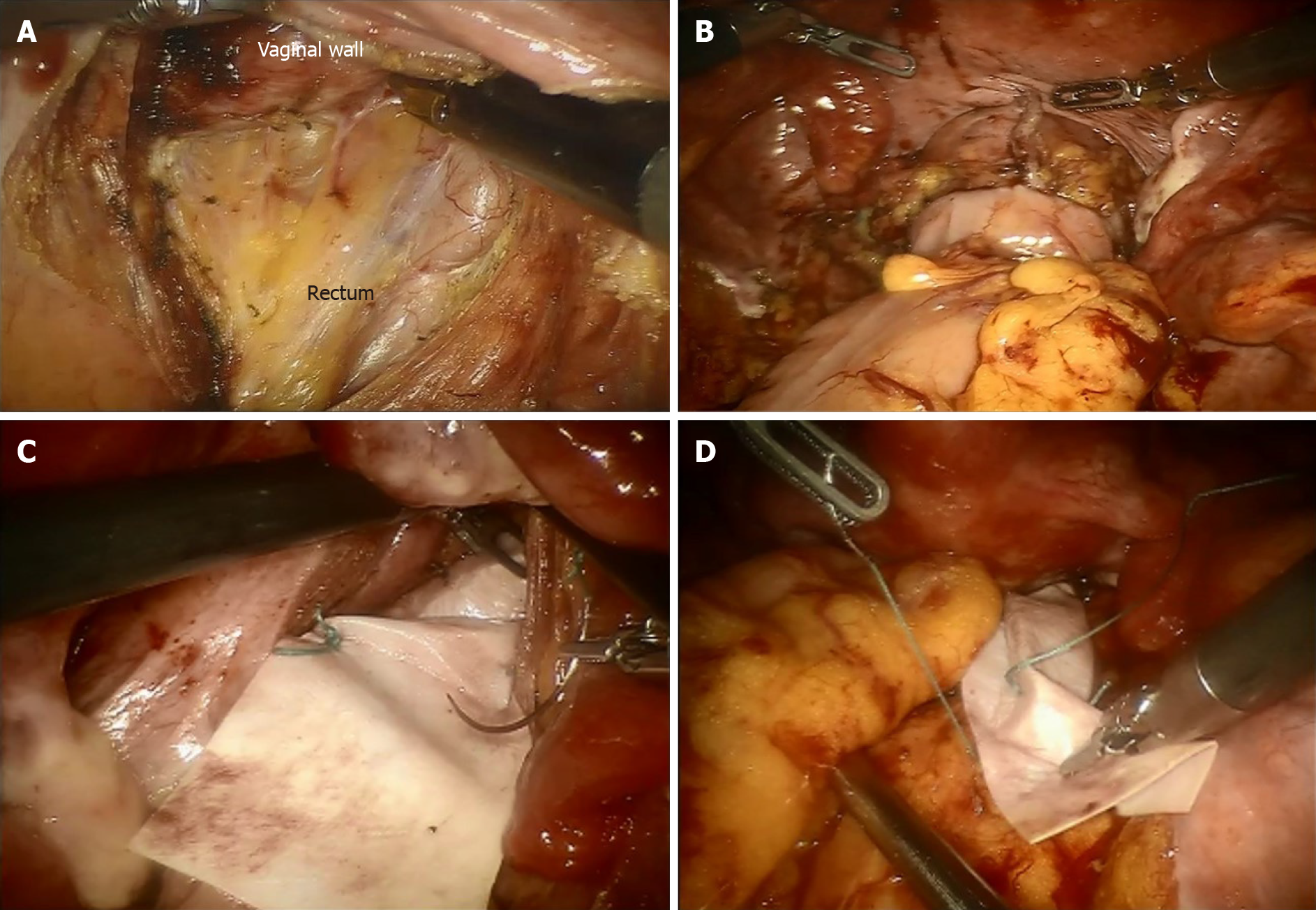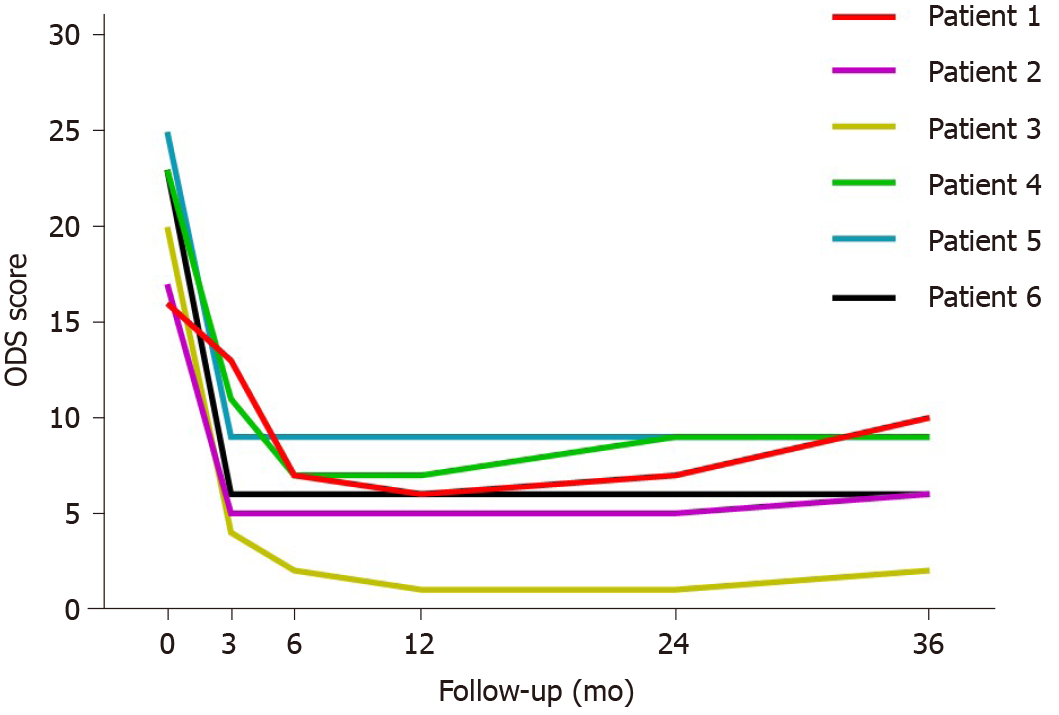Copyright
©The Author(s) 2020.
World J Clin Cases. Dec 6, 2020; 8(23): 5976-5987
Published online Dec 6, 2020. doi: 10.12998/wjcc.v8.i23.5976
Published online Dec 6, 2020. doi: 10.12998/wjcc.v8.i23.5976
Figure 1 Abdominal ventral rectopexy with colectomy for obstructed defecation syndrome.
A: The anterior plane of the rectum was dissected from the vagina down to the levator ani; B: Colorectal anastomosis; C: The distal mesh fixation was performed at the lowest point of the rectovaginal space; D: The proximal mesh was sutured on the sacral promontory.
Figure 2 The variation in constipation symptoms in patients with obstructed defecation syndrome undergoing surgery assessed by a Wexner Constipation Score > 15, as severely symptomatic.
The mean Wexner Constipation Score before surgery was 18.6 (range 15-23) and the scores reduced to 6.7 (range 3-10) at 36 mo. WCS: Wexner Constipation Score.
Figure 3 The variation in constipation symptoms in patients with obstructed defecation syndrome undergoing surgery assessed by an obstructed defecation syndrome score > 10, as severely symptomatic.
The mean obstructed defecation syndrome score decreased from 20.7 (range 16-25) preoperatively to 7 (range 2-10) at the end of follow-up. ODS: Obstructed defecation syndrome.
Figure 4 Quality of life assessed by the Patients Assessment of Constipation Quality of Life score in patients with obstructed defecation syndrome before and after surgery.
The mean Patients Assessment of Constipation Quality of Life score improved from 57.5 (range 42-69) to 23.3 (range 13-38). PAC-QOL: Patients Assessment of Constipation Quality of Life.
- Citation: Wang L, Li CX, Tian Y, Ye JW, Li F, Tong WD. Abdominal ventral rectopexy with colectomy for obstructed defecation syndrome: An alternative option for selected patients. World J Clin Cases 2020; 8(23): 5976-5987
- URL: https://www.wjgnet.com/2307-8960/full/v8/i23/5976.htm
- DOI: https://dx.doi.org/10.12998/wjcc.v8.i23.5976












